India Is Emulating China’s Worst Traits

By Asavari Singh
Contributor
8/3/2021

Narendra Modi and Xi Jinping at the 2017 BRICS Leaders summit
If you’re in India and you’d like to stay out of jail, you do not want to befriend Greta Thunberg, the teenage environment crusader. It’s no secret that she is feared and loathed by powerful and not-so-powerful men the world over, but most of them just spew a bit of vitriol and move on. In India, though, the world’s largest democracy where freedom of speech is a constitutional right, you could get arrested just for talking to her about problems in your country.
On the night before Valentine’s Day, 21-year-old climate activist Disha Ravi was arrested and hauled to jail. Her alleged crime: she tried to “defame” India and create “unrest” by corresponding with foreign citizens, including Thunberg, about the ongoing agitation in India by farmers against three new agricultural laws that they believe – rightly or wrongly – will bring them financial ruin. Disha had apparently made a couple of edits to a “toolkit” on Google docs that summarized various points about the protests in northern India and what could be done to support them. For this, Disha was accused of conspiracy and sedition, a terrifying, nebulous colonial-era law. Around this time, the Indian government also got into a standoff with Twitter, demanding the social media giant remove content that it deemed – entirely arbitrarily – anti-national and inflammatory. When it encountered resistance, the government reportedly threatened Twitter, Facebook, and WhatsApp employees with jail time if they didn’t produce data relating to the farmers’ protests.
Still, so far, despite the Hindu supremacist government that has been clamping down ruthlessly on journalists, activists, and anyone else who talks back too much, it’s been impossible to truly silence dissenters. The judiciary is far from efficient, but it’s not hopeless. Disha’s case illustrates this. 10 days after her arrest, she was granted bail, with the judge categorically stating that “the freedom of speech and expression includes the right to seek a global audience.” Another check-and-balance is the media. While mainstream media organizations are often wary of criticizing the government because they might lose advertising revenue or run into various other problems, there are resolutely defiant independent publications and journalists who do not hesitate to speak truth to power. But it’s unclear how long they’ll be willing or able to risk their lives and liberty to do their job. In 2020, 67 journalists were arrested and detained for their work. In 2021, nine journalists faced criminal charges (seven of them were sedition charges) for their coverage of the farmers’ protests; at least one reported being brutally beaten in police custody.
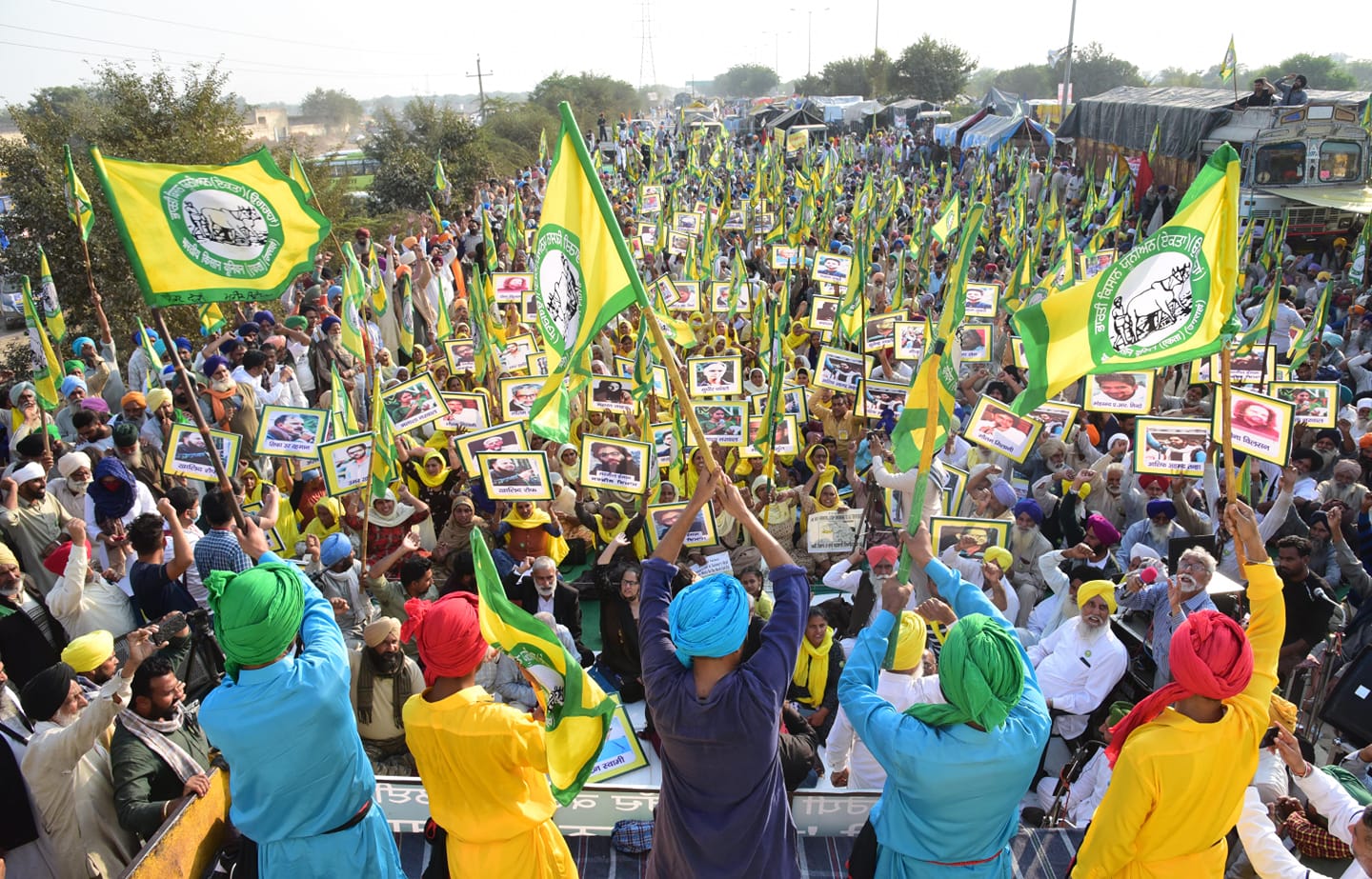
Farmers’ protest
It’s not a huge shock, then, that India was downgraded from a “free” nation to a “partly free” one in Freedom House’s 2021 report. According to the report, the current Hindu nationalist government has failed to serve as “a counterweight to authoritarian influence from countries such as China” and Prime Minister Narendra Modi and his Bharatiya Janata Party (BJP) are “tragically driving India…towards authoritarianism.”
But here’s the thing: the majority of Indians see nothing “tragic” about these developments and, in fact, celebrate the turn the country is taking.
According to a nationwide survey in January 2021, Modi, who’s in his second term as prime minister, remains popular despite a weak economy, rising unemployment, a disastrous overnight “demonetization” of high-value currency notes, the persecution of Muslims, internet shutdowns, and a COVID policy that harmed migrant workers. Vast swathes of the population are willing to suffer for him for the simple reason that they believe he is acting in their long-term best interests. With his image as part-Hindu sage, part strongman, part inspirational self-made man (if he can do it so can you!), the majority of people continue to believe in him and have been willing to endure whatever pain has come their way – including their hard-earned money suddenly becoming worthless – for the greater good.
It’s not just about Modi and his cult of personality, however. Many Indians are in favor of autocracy as a form of government. A 2017 Pew survey, for instance, found that 55% of Indians supported a “governing system where a strong leader can make decisions without interference from parliament or the courts” and 53% were in favor of military rule. Out of the 38 nations surveyed, India was one of only seven where more than six in 10 supported technocracy. China serves as a useful model for this, and in conversations across the country — with taxi drivers, suburban moms, and CEOs — a common line of thought often emerges: Democracy has gotten us nowhere and India needs an autocratic government not only for protection from “aggressors” like China but if she has any hope of becoming like China.
Many Indians are in favor of autocracy as a form of government.
When you live next-door to someone and share a garden wall with them, it’s difficult not to draw comparisons. Your houses may not have been that different when they were built, but now you see their new pool, their shiny cars, their landscaped garden. You don’t currently have the resources to build the pool or buy the cars or redo your garden, but there are certain things they do that are within your reach: they spank their kids for saying certain words, they don’t tolerate arguments, and they have some pretty serious internet rules. Those things you can do.
This is how India looks at China today.
As China has forged ahead and India has bumbled along, taking some steps forward and some backward, we look enviously at the Shanghai skyline, the futuristic bullet trains, the thrumming economy. We obsess over China’s success, even as we seethe over its military incursions into border territories and gleefully celebrate supposedly punitive “boycotts” – official or unofficial — of Chinese goods and apps. We also know that deep down China doesn’t really care much about what we do, and we wonder how it has grown so much greater than us.
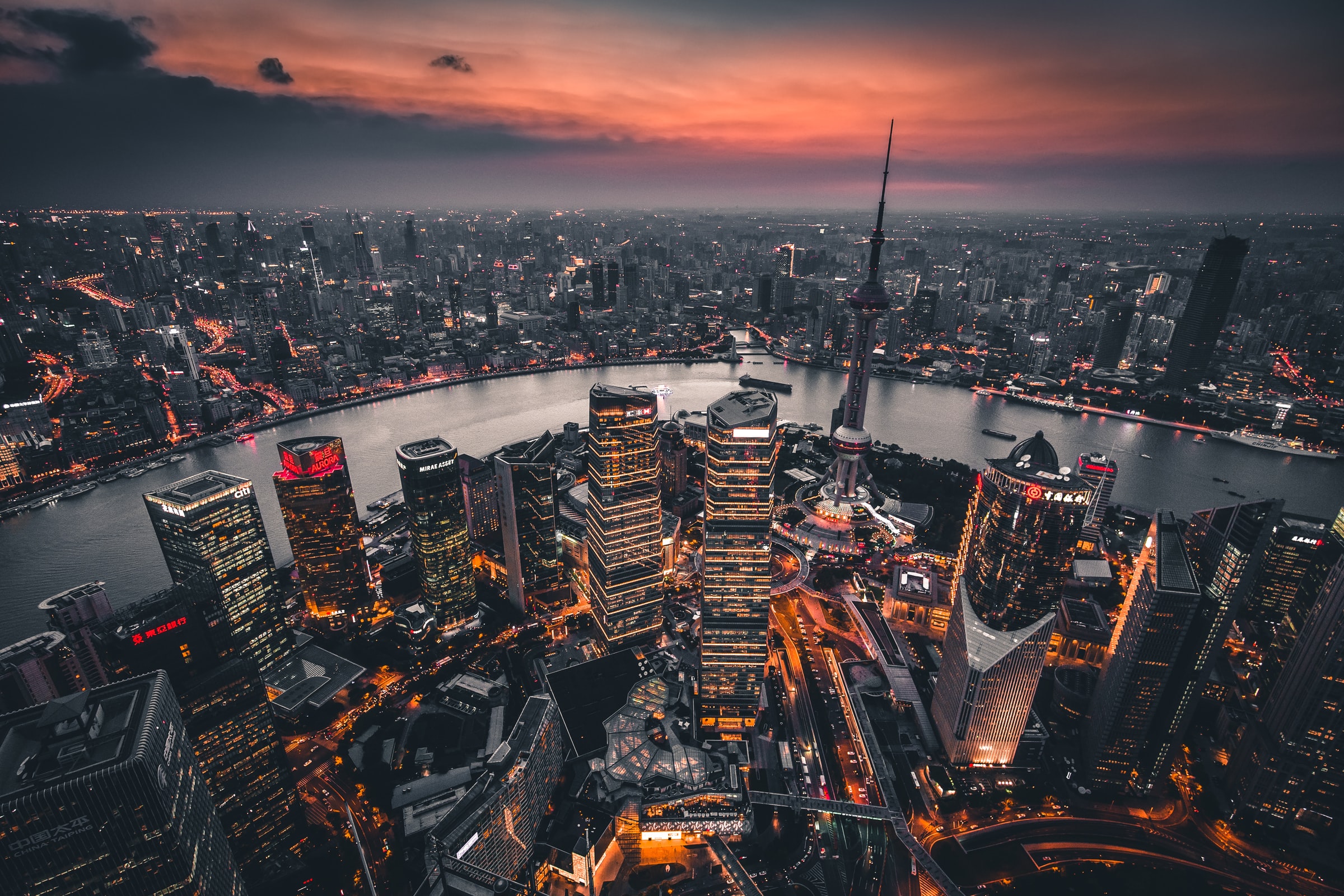
Shanghai
As of 2019, China’s GDP per capita was approximately 2.4 times larger than India’s. But back in 1990, India’s GDP per capita was actually a bit higher. 30 years ago, Western newspapers like the New York Times spoke about both countries as “enormous, largely rural, developing,” but now we only seem to have “enormous” in common. While China has modelled what is often lauded as a formidable alternative to the Western neoliberal model, India’s claim of being the world’s largest democracy now seems motheaten and irrelevant to a significant chunk of its own population. Democracy to us now signifies dysfunction rather than power. If we must emulate and indeed compete with someone, goes a popular refrain in India, it’s better for it to be China and its $15 trillion economy than the West with its recessions and political upheavals.
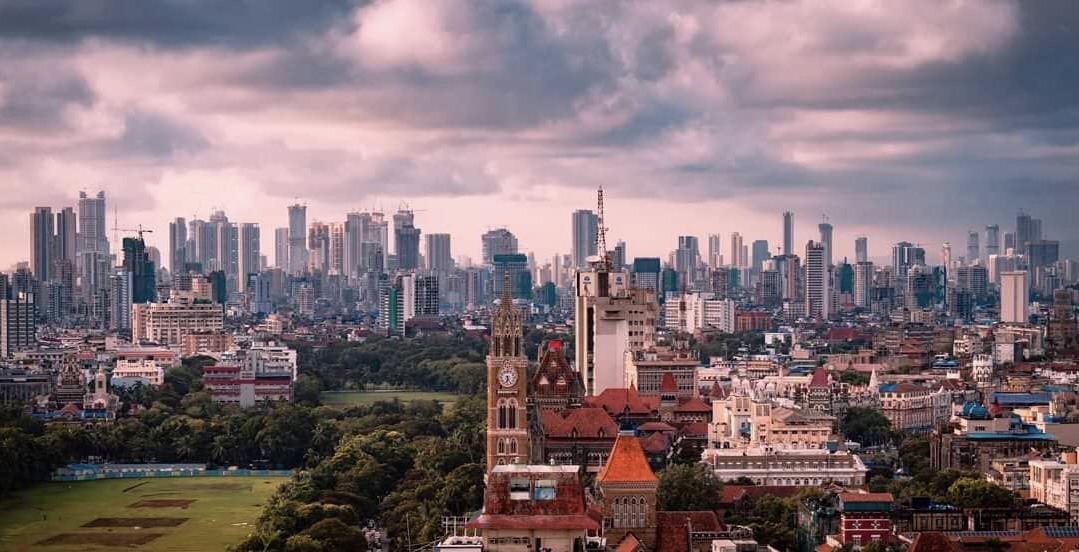
Mumbai (Picture Credit: Aj777x)
Unfortunately, bolstered by an electorate that is desperate for “decisiveness” and direction in any form, our government is less interested in emulating China’s industrial and trade policies than in copying some of its ugliest traits.
And the strategy is working, albeit in strictly populist terms.
The way Indian society is structured and functions is a major reason for our starry-eyed view of China, and particularly the credit we give its authoritarian government.
India has for centuries been a fundamentally undemocratic and restrictive society that has been uneasy with its much-touted diversity. The past 70 years or so of electoral democracy hasn’t changed that. One reason is the caste system, rooted in ancient scriptures, which divides Hindus into four hierarchical groups (within which are many subgroups) with strict codes on occupation, marriage, and social mobility. In this system, as it exists today, individual liberties are seen as inimical to the good of the community (which is demarcated by caste and religion), and where the writ of all-knowing elders and family enforcers runs large. Being brought up with these values predisposes many Indians to revere authority.
Secondly, India is a vast land of dizzying contradictions, and has historically been torn between autocracy and democracy. The last time we were under a dictatorship was when Prime Minister Indira Gandhi declared an emergency in the 1970s after she was found guilty of electoral fraud. For nearly two years, the media was stifled, political opponents were arrested, a mass sterilization campaign was unleashed, and the Constitution was amended to suspend fundamental rights. It was only when Indira Gandhi allowed elections to be held again that democracy returned, and she was ousted by the people. Yet, her appeal as a “strong” leader was not entirely extinguished and she returned to power in 1980 and took a hard line against a Sikh secessionist movement, before being assassinated in 1984 by her own Sikh bodyguard.
Finally, India is a relative newcomer to democracy. Under 200 years of British rule, the subcontinent was divided into provinces that were directly administered by the colonial regime and hundreds of largely autocratic princely states with treaties with the crown. When the British finally hung up their boots in 1947, they left behind not one but two dominions that were split along religious lines— India and Pakistan. In the years since independence, the fissures of caste and religion have been exploited relentlessly by various political parties, leading to a deep disillusionment with the idea of a democratic India. The Westminster model of government that we inherited has lost its sheen, while the Chinese alternative seems to represent exciting possibilities.
The Westminster model of government that we inherited has lost its sheen, while the Chinese alternative seems to represent exciting possibilities.
This sentiment has peaked under Prime Minister Narendra Modi who was elected in 2014 and then again in 2019. The sheer force of his personality eclipsed almost everyone who’d come before him. He promised that his strength and muscularity – his “56-inch chest” – would help India barrel ahead and assert her Hindu identity. He was not bothered with caste, he said, but sought to unite Hindus into a force to reckon with. He could do this, he implied, only if he was not obstructed by other leaders and political parties who were more concerned with appeasing religious minorities (which comprise about 20% of the population) than they were with propelling India forward. In 2015, Modi made a rousing speech to a group of CEOs in Shanghai that was widely publicized in India, in which he called India and China the “two great and old civilizations of the world.” Relations with China in the years since have frayed, due to the escalation of border disputes, but many still see similarities between the two countries and dream of India pulling off a China-like ascent.
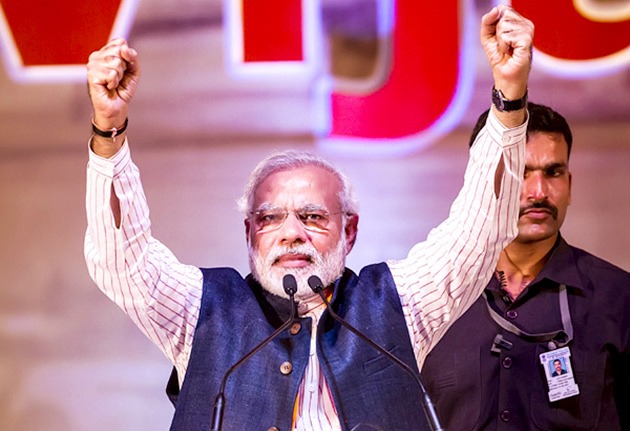
Modi at a rally in Goa (Picture Credit: Narendra Modi)
This is mostly due to the perceived similarities between Modi and Chinese President Xi Jinping, whose brand of authoritarianism is often credited in India for China’s success. These similarities can be seen in their policies.
China tightened controls on NGOs, the internet, and religion — well, so did India! Xi put activists and journalists in jail — so did India! Social media shutdowns and restrictions? Coming right up, including the recruitment of “online snitches”! Anti-government protesters arrested using facial recognition software? Check. Intrusive coronavirus tracing app? India has it too!
Much like the Chinese Communist Party (CCP), the BJP is a master of propaganda. There has also been a move towards conflating the BJP with India and Indian identity, such that to speak against the party is to speak against India, to question the party’s policies means you are “anti-national” and dangerous, to criticize its laws makes you seditious. To many Indians, such configurations are necessary – maybe even a necessary evil – to forge the kind of cohesiveness and nationalism that China is seen to have leveraged for its economic rise.
But in their eagerness to copy China, many Indians don’t bother to examine the facts, or they’d know that China’s success story began under Deng Xiaoping with a move away from Maoist authoritarianism. It stemmed not from shutting down but opening up, whether it was the economic reforms of the 1970s or liberalization in the 90s. In addition, as the Nobel Prize-winning economist Amartya Sen has pointed out, China invested heavily in education and health early on – while India was and is sorely lagging on both fronts. This is what allowed China to enjoy phenomenal growth, not its authoritarian style of government.
Many Indians don’t bother to examine the facts, or they’d know that China’s success story began under Deng Xiaoping with a move away from Maoist authoritarianism.
While China has cut administrative red tape, India remains mired in bureaucracy at every level, which severely hinders economic freedom. One metric is the ease of doing business: China places a very respectable 31 out of 130 countries in the global ranking, but India, though it has improved in recent years, is still far below at 63. Then there’s corruption. Transparency International found India had the highest overall rate of bribery in Asia. China, too, has long had significant problems on this front but launched a serious anti-corruption campaign which it said punished over a million corrupt officials (though this campaign was also used to eliminate rivals and dissenters).
Another misconception is that China’s prosperity is due to its autocratic system. But Chinese people may have certain traits that lead them to succeed, like a propensity for hard work and enterprise. For instance, this article points out that “every Asian country where people who are ethnically and culturally Chinese comprise a large enough percentage of the population” happens to be highly prosperous – including Taiwan, Singapore, and Malaysia. In addition, even in countries where they are a minority, like the Philippines (1%), the Chinese “control a disproportionate share (60%) of the private economy.” Not only does this admiration of Chinese dictatorship threaten the survival of democracy in India, it is founded on a misreading of China’s development story.
Most Indians also have no clue how diverse China is. People there hold a variety of opinions – including a desire for the ordinary freedoms enjoyed by people in democracies around the world, as evidenced in the Hong Kong protests and the valiant whistleblowers and journalists who “pick quarrels and provoke trouble.” The Chinese people thrive and drive China forward despite and not because of their lack of political freedoms. The human costs of autocracy are heavy in China, but we do not often get to see them due to oppression and censorship.
India has its own unique problems, of course. As B. R. Ambedkar, one of the framers of the Indian Constitution noted presciently more than half a century ago: “In politics we will be recognizing the principle of one man one vote and one vote one value. In our social and economic life, we shall, by reason of our social and economic structure, continue to deny the principle of one man one value.” This means that political equality means very little when there are such deep social and economic inequalities in India. These remain inadequately addressed, feeding a sense of grievance that power-hungry politicians have tapped to their advantage. However, the solution to our problems lies not in autocracy but in playing to our strengths even as we work to overcome our weaknesses.
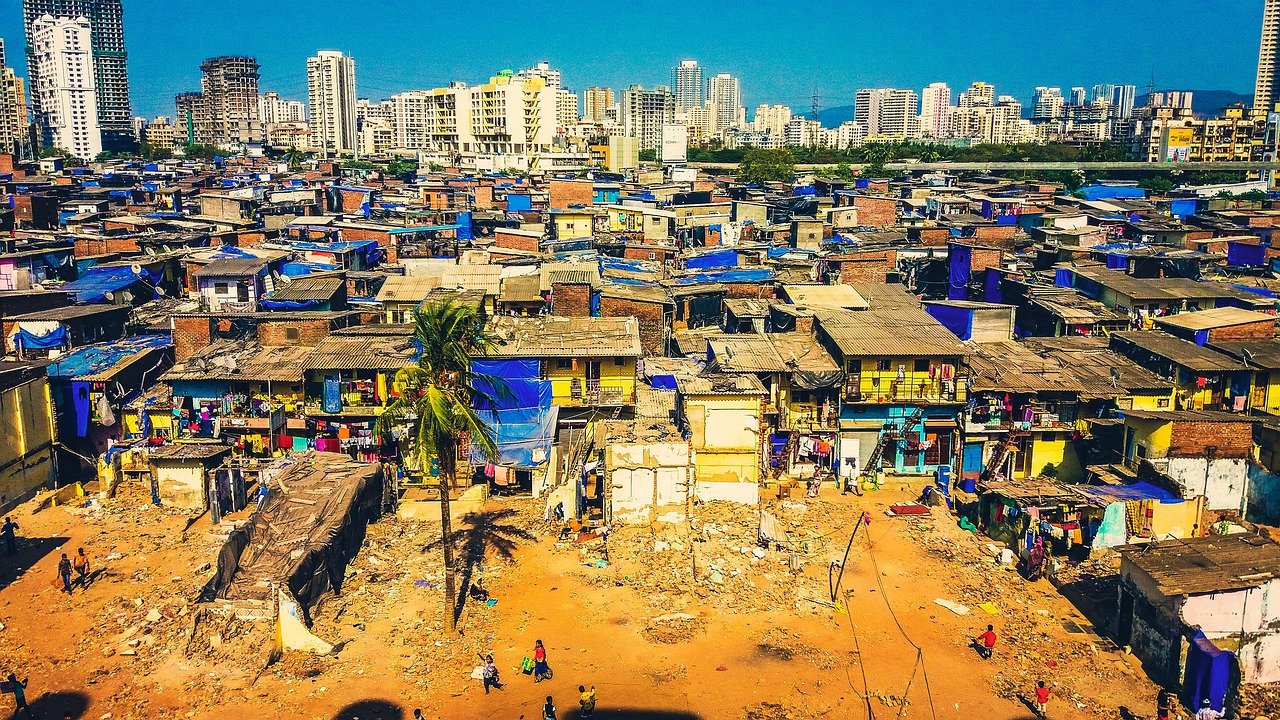
Slums of Mumbai
Many Indians voted for Modi not because of his right-wing politics but because they wanted change – better infrastructure, education, healthcare, jobs. They were sick of the previous weak governments and their track record of nepotism and corruption. His promises of building a temple on a major Hindu religious site contested by Muslims appealed to sections of the populace, but so did his promises of development, boosting manufacturing, supporting start-ups, alleviating poverty, and cleaning up India’s filthy streets. Many put their misgivings about Modi’s chauvinism aside because they thought he’d bring prosperity.

Riots racked Delhi in 2019 after the government passed a controversial citizenship law that appeared to discriminate against Muslims (Picture Credit: Scroll news paper)
Nearly seven years later, we do have the temple, but on almost every other parameter there is much to be desired. We are now constantly preoccupied with identity politics even as our freedoms are slowly being eroded.
What India really needs is a sustained effort to address her weaknesses and leverage strengths that neighbors like China do not have. For instance, while China’s ageing population has been described as a “ticking demographic time bomb,” India has one of the youngest populations in the world. This “demographic dividend,” however, will pay off only if we urgently tackle the gaps in education so as to improve the quality of our human capital. The adult literacy rate is only 73.2% (compared to China’s 96.8%). Besides, unless you can pay through your nose, the general quality of schooling and even college in India is abysmal —one indicator of this is that 80% of India’s engineers are basically “unemployable” because they lack necessary skills. It doesn’t help that job opportunities — skilled or unskilled, rural or urban — are few and far between. The government needs to step in to fund existing rural employment schemes and provide greater assistance to struggling sectors like small to medium enterprises. It’s sobering that less than half of India’s working age population is employed (in China, about 65% have jobs). If these issues are tackled effectively, India’s youth could lead the country forward.
Another advantage India enjoys is that she has cultivated more powerful friends than China has. However, many countries, especially the US, are unlikely to remain kindly disposed if India continues to follow a China-like path of oppression. It is in India’s best interests to take democracy seriously. So far, all that the repression of the past few years has given India is a bad name.
It is in India’s best interests to take democracy seriously. So far, all that the repression of the past few years has given India is a bad name.
There are also economic reasons for encouraging rather than silencing the “argumentative Indian.” It’s well known that a disproportionate number of Indians – like Microsoft CEO Satya Nadella, Google CEO Sundar Pichai, and IBM CEO Arvind Krishna, to name a few – get leadership jobs in the US while many East Asians encounter the “bamboo ceiling.” According to recent research, this has a lot to do with cultural factors: while East Asian cultures encourage “humility, harmony, and stability,” South Asians are more assertive and willing to debate, which are qualities that are valued in leaders in America. The irony is that in India, this argumentative streak is generally discouraged and many talented professionals seek their fortunes abroad. This so-called brain-drain can be countered, at least partly, if India and its institutions become more open to debate and innovation. Rote learning and blind acceptance of authority are hallmarks of most schools and colleges in India, which is a source of endless frustration for many talented students. Add to that authoritarian families and an autocratic government and the atmosphere becomes even less conducive to nurturing and retaining talent.
Finally, the government’s sectarian policies and heavy-handed response to dissent is not sustainable in India even if a majority of people support it. Minorities make up a large portion of the population in India, even larger than they do in China. Out of a population of 1.3 billion, there are 200 million Muslims, 27.8 million Christians, and 20.8 million Sikhs. Targeting these groups rather than the problems we face as a nation is bound to be economically and socially counterproductive even if it brings short term political gains. Copying China’s worst traits instead of her positive qualities, whilst losing sight of our own strengths, isn’t going to help us compete with her.
